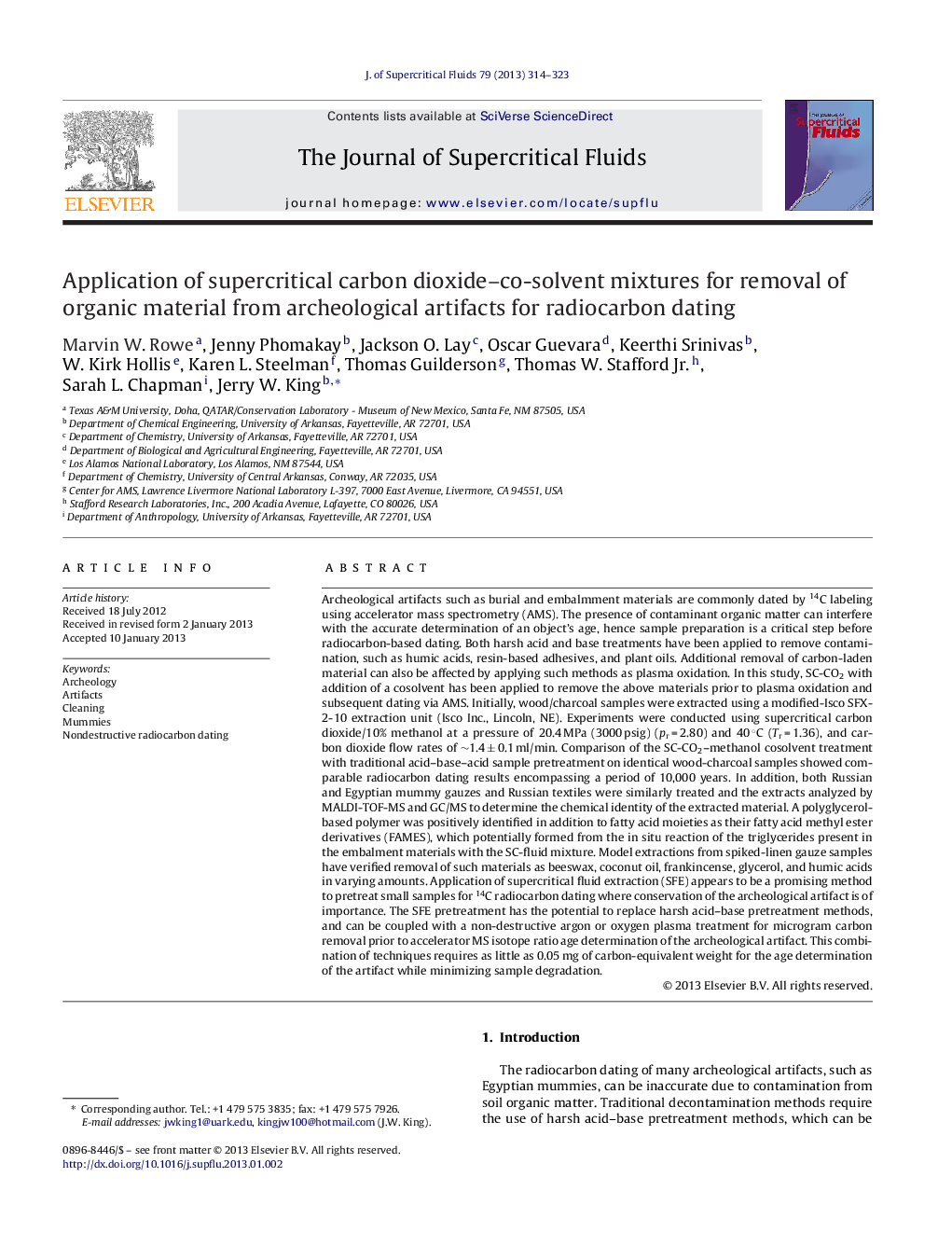| کد مقاله | کد نشریه | سال انتشار | مقاله انگلیسی | نسخه تمام متن |
|---|---|---|---|---|
| 230746 | 1427398 | 2013 | 10 صفحه PDF | دانلود رایگان |

Archeological artifacts such as burial and embalmment materials are commonly dated by 14C labeling using accelerator mass spectrometry (AMS). The presence of contaminant organic matter can interfere with the accurate determination of an object's age, hence sample preparation is a critical step before radiocarbon-based dating. Both harsh acid and base treatments have been applied to remove contamination, such as humic acids, resin-based adhesives, and plant oils. Additional removal of carbon-laden material can also be affected by applying such methods as plasma oxidation. In this study, SC-CO2 with addition of a cosolvent has been applied to remove the above materials prior to plasma oxidation and subsequent dating via AMS. Initially, wood/charcoal samples were extracted using a modified-Isco SFX-2-10 extraction unit (Isco Inc., Lincoln, NE). Experiments were conducted using supercritical carbon dioxide/10% methanol at a pressure of 20.4 MPa (3000 psig) (pr = 2.80) and 40 °C (Tr = 1.36), and carbon dioxide flow rates of ∼1.4 ± 0.1 ml/min. Comparison of the SC-CO2–methanol cosolvent treatment with traditional acid–base–acid sample pretreatment on identical wood-charcoal samples showed comparable radiocarbon dating results encompassing a period of 10,000 years. In addition, both Russian and Egyptian mummy gauzes and Russian textiles were similarly treated and the extracts analyzed by MALDI-TOF-MS and GC/MS to determine the chemical identity of the extracted material. A polyglycerol-based polymer was positively identified in addition to fatty acid moieties as their fatty acid methyl ester derivatives (FAMES), which potentially formed from the in situ reaction of the triglycerides present in the embalment materials with the SC-fluid mixture. Model extractions from spiked-linen gauze samples have verified removal of such materials as beeswax, coconut oil, frankincense, glycerol, and humic acids in varying amounts. Application of supercritical fluid extraction (SFE) appears to be a promising method to pretreat small samples for 14C radiocarbon dating where conservation of the archeological artifact is of importance. The SFE pretreatment has the potential to replace harsh acid–base pretreatment methods, and can be coupled with a non-destructive argon or oxygen plasma treatment for microgram carbon removal prior to accelerator MS isotope ratio age determination of the archeological artifact. This combination of techniques requires as little as 0.05 mg of carbon-equivalent weight for the age determination of the artifact while minimizing sample degradation.
Figure optionsDownload as PowerPoint slideHighlights
► Use of SC-CO2 for the treatment of archeological artifacts and burial materials.
► Development of a sample pretreatment method prior to radiocarbon dating of artifacts.
► Method applied to wood-charcoal residues, mummy and textile gauzes and Canopic jars.
► SFE coupled in sequence with plasma oxidation and accelerator mass spectrometry.
Journal: The Journal of Supercritical Fluids - Volume 79, July 2013, Pages 314–323